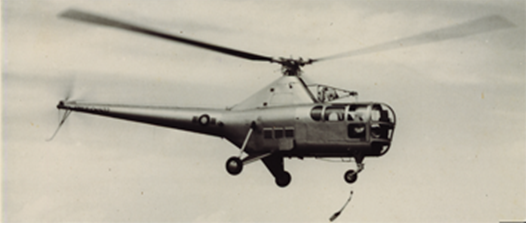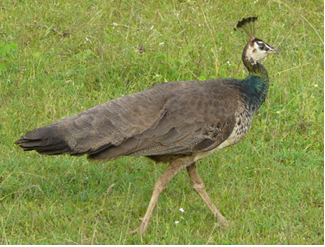SHOOTING A PEAHEN FROM A RCyAF DRAGONFLY S51 ON AN AERIAL PATROL – By Mahendra Situnayake, RCyAF / RAF
On 16th October 1957, it was decided (I cannot remember whether the decision was made by RCyAF, HQ or the Station Commander of Katunayake (Wg Cdr Alastair Steedman) to detach a Dragonfly S51 and Crew (Milroy De Soyza, LAC Edgar Cooray, LAC “Bunnis” Gunasekera and me) to the Army Camp at Mannar – to carry-out Anti-Illegal Immigrant Patrols around the coastal waters of the Mannar Peninsula and the Mainland.
 RCyAF Dragonfly
RCyAF Dragonfly
Pic: http://www.airforce.lk/slaf66/history.html
According to my log book, we returned to Katunayake on 25th October 1957 – having flown 17 hours (including the transit from Katunayake to Mannar and the return from Mannar to Katunayake) in the course of the detachment. I cannot remember how far out to sea the rules permitted us to fly, but I have a vague recollection that Milroy and I (we shared the flying-turn and turn-about) wore Mae Wests during our Patrols. We carried out one Patrol over a suspected fishing boat, on 24th April, but did not see any other fishing-boat-activity that we considered to be illegal, during all of our other sorties.
During the many sorties in the preceding months that Milroy and I had carried out in the Dragonfly, I had requested (and been granted) permission to carry a shotgun and ammunition on any sortie that involved flying over jungle – as protection in case we had to force-land in inhospitable terrain. We were therefore carrying this shotgun and ammunition in the course of our flying on the “Mannar Detachment”.
On one particular patrol along the main coastline (Milroy was flying, and I was seated in the rear compartment of the Dragonfly), a peahen got disturbed by the helicopter and flew out of the scrub slightly below and alongside us. Without thinking about the consequences, I hurriedly loaded the shotgun and fired at the peahen – and “downed” it!
 Pic: Google Images
Pic: Google Images
On reflection, it was not a very clever action – for the spread of the pellets of the cartridge might well have damaged the rotor blades! In the event, very fortunately, this thoughtless action of mine did not cause any damage – as the peahen was luckily below the level of the Dragonfly’s rotor blades! When the peahen fell to the ground, I advised Milroy of what had happened – and he landed the Dragonfly close to where I had seen the peahen fall and I got out of the helicopter, picked-up the peahen, and returned to the aircraft. That evening, in the Mannar Officers’ Mess, all the residents had Peahen Curry for Dinner! And, if my memory serves me correctly, it tasted delicious!
___________________________
About the author
Mahendra Situnayake (Situ) joined the newly formed Royal Ceylon Air Force (RCyAF) in 1952 as a Flight Cadet and proceeded to RAF Cranwell, UK for training. There he won the R.M. Groves Memorial Trophy for the best flyer of Cranwell’s 64th Entry – only the second Asian in Cranwell’s history to secure this trophy. He graduated from Cranwell in April 1955 and returned to the RCyAF and started his career as a military pilot. In July 1959, Situ was sent to RAF Central Flying School, Little Rissington for Qualified Flight Instructor (QFI) training which included flying of the Jet Provost aircraft. On graduation as a QFI in February 1960, he proceeded to RAF South Cerney for Qualified Helicopter Instructor (QHI) training flying the Dragonfly helicopter. In April 1960 he became a QHI and returned to the RCyAF to perform duties as a flying and helicopter instructor. In 1963, Situ resigned from the RCyAF and proceeded to UK. There, in September 1964, he enlisted in the Royal Air Force (RAF) and became RAF No 230 Squadron’s QHI at RAF Odiham. After that he held many positions in the RAF, many flying relared including the stint as the CO of the RAF 84 squadron detachment to the United Nations Forces in Cyprus in April 1977. He was also assigned to some support services related duties in the RAF. Situ retired from the RAF in April 1987 having served the air forces of two nations for over 35 years.







